It's slow going in the excavation block. During our previous day in the field, we began getting into what appeared to be a Late Archaic / Early Woodland deposit in Units 4 and 6. That day ended with numerous artifacts marked in place on the floors of those units. The crews in those units spent most of the latest field day dealing with those artifacts, plotting and collecting each one.
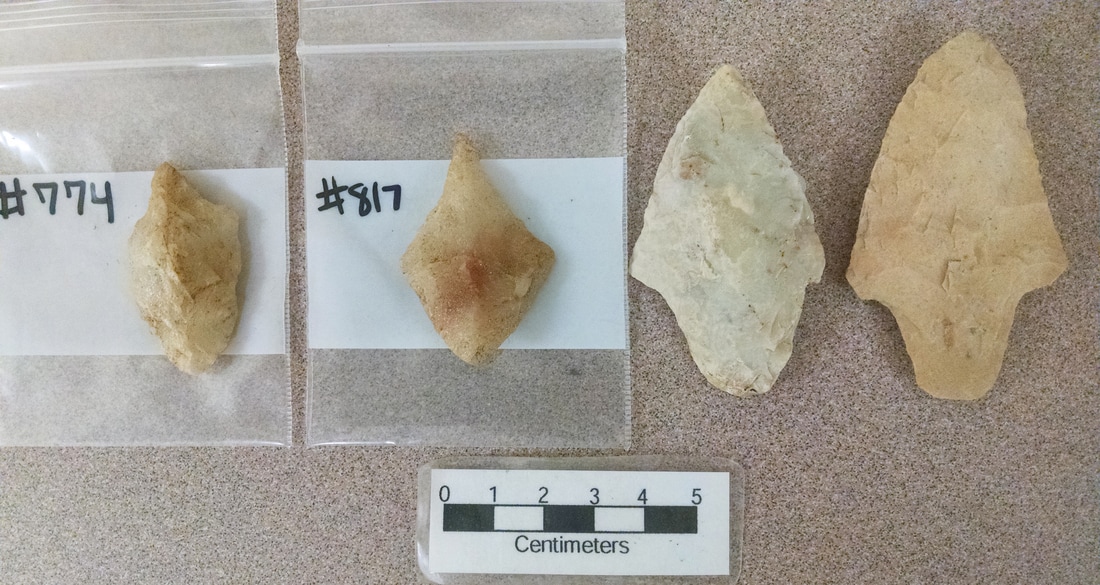
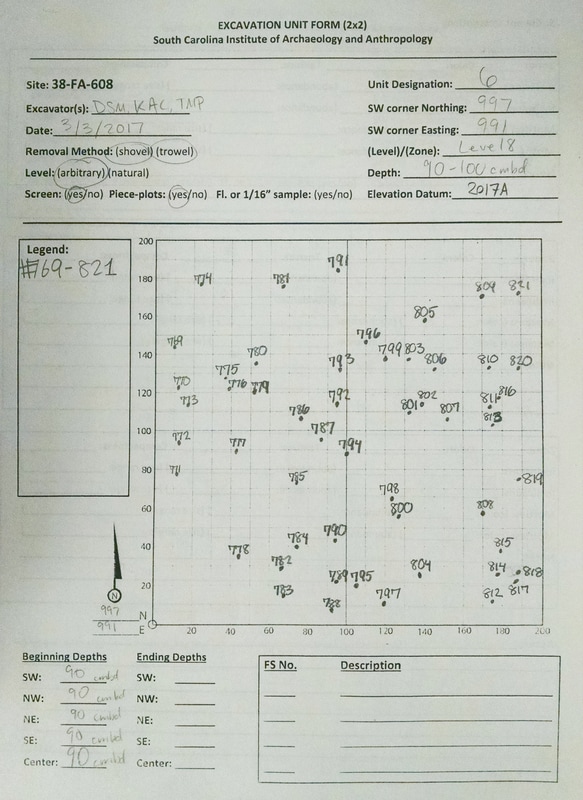
Feature 8 was a circular area of light sediment. We documented it in plan and then bisected it. It appears to be a circular pit with relatively straight sides that extend at least 15 cm from the depth at which the feature was defined. Based on the light fill of the feature, its shape in plan and profile, and the fact that it appeared within Zone 2 (the buried plowzone), the feature is almost certainly a historic period post or auger hole of some kind. We'll need to scoop out the remaining fill to keep any intrusive artifacts from plowzone from contaminating the prehistoric deposits.
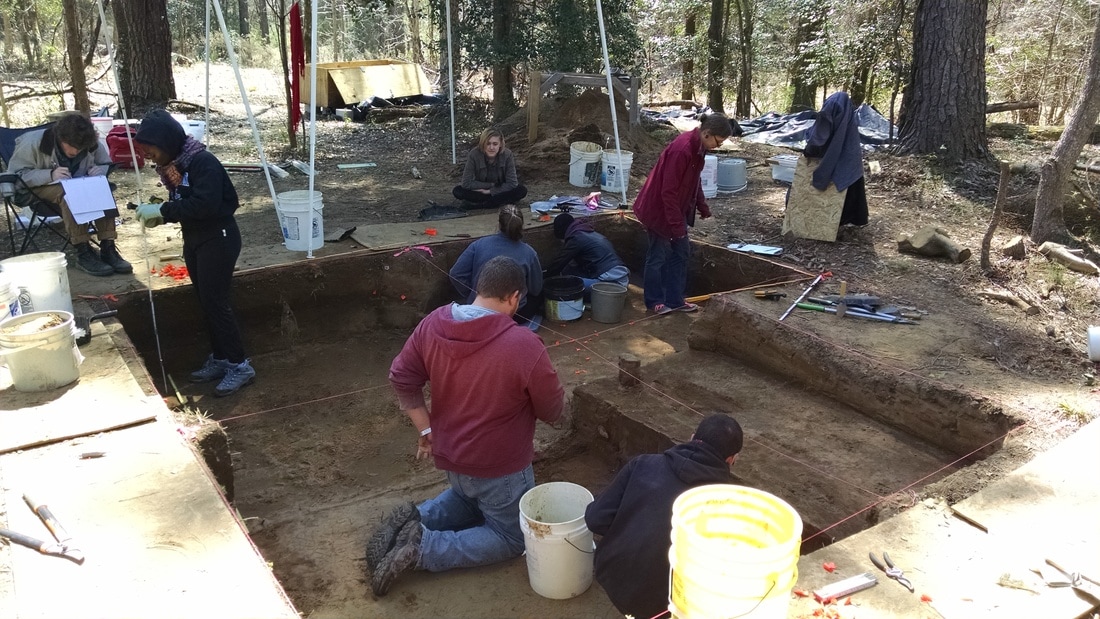
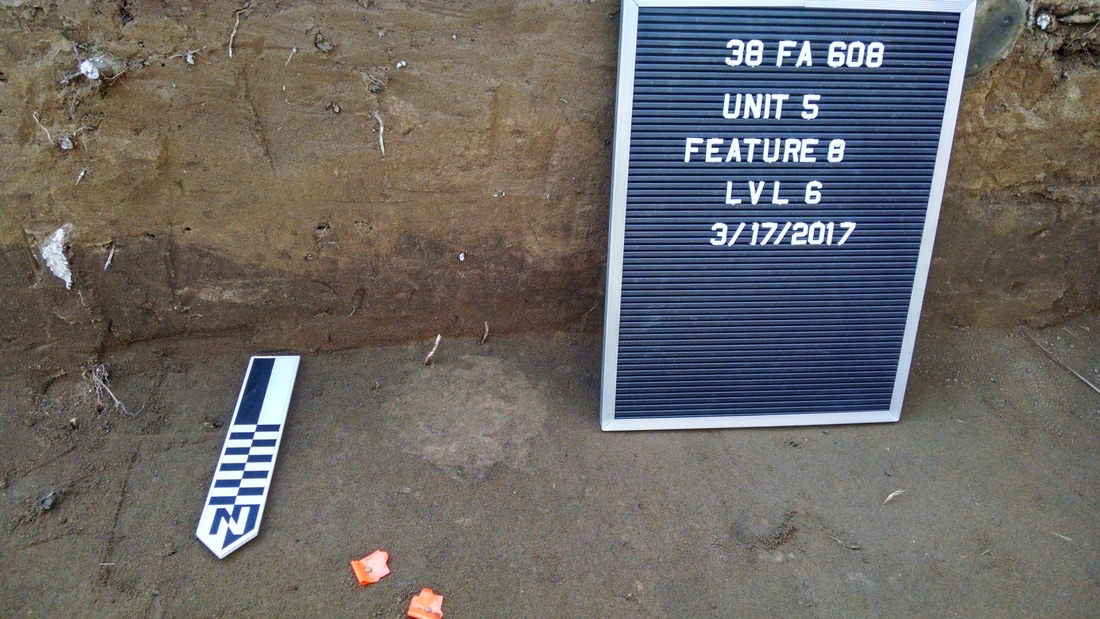
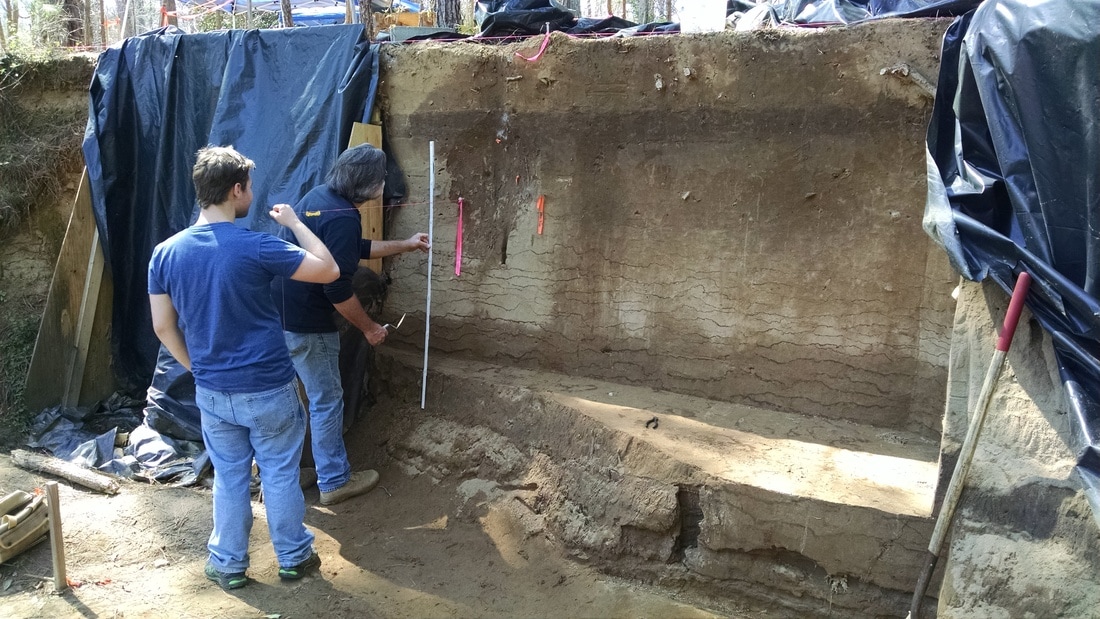


 RSS Feed
RSS Feed
